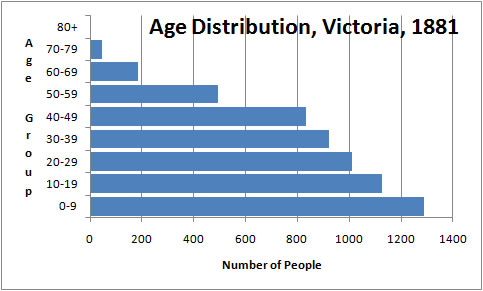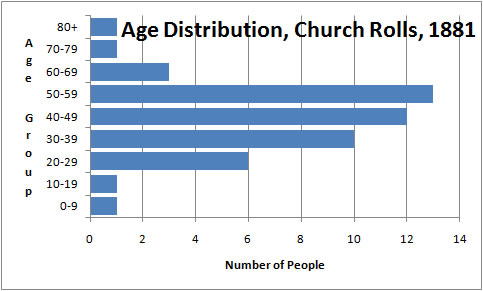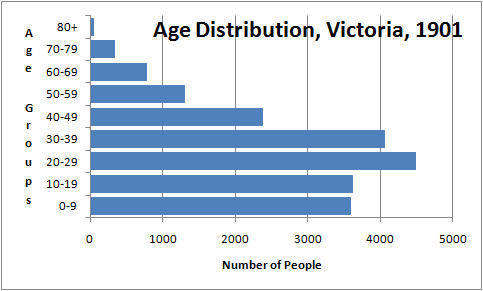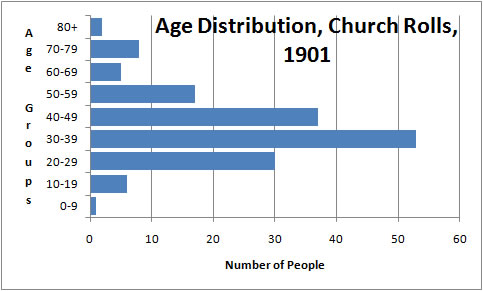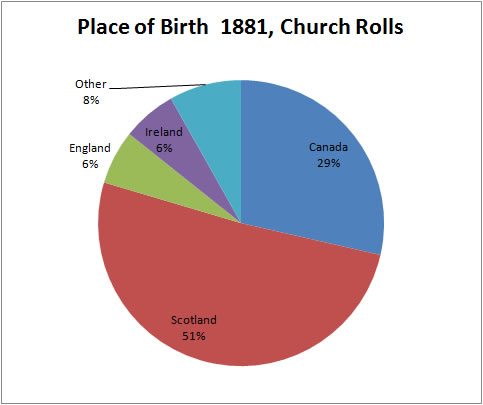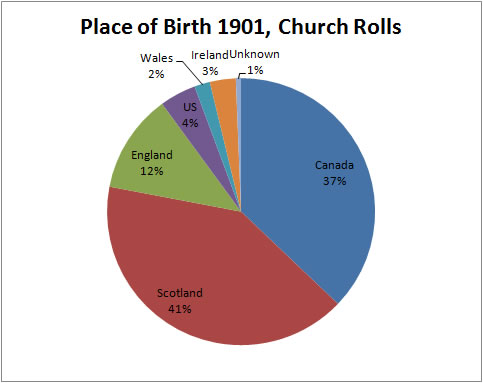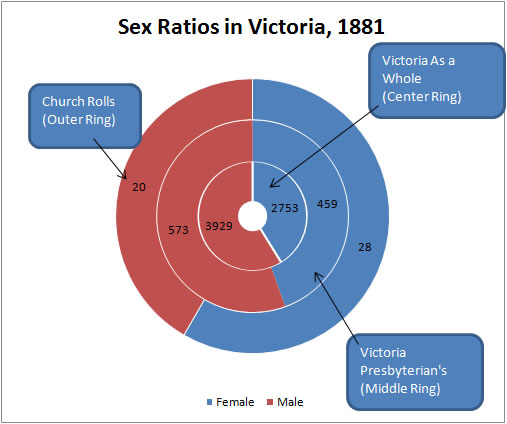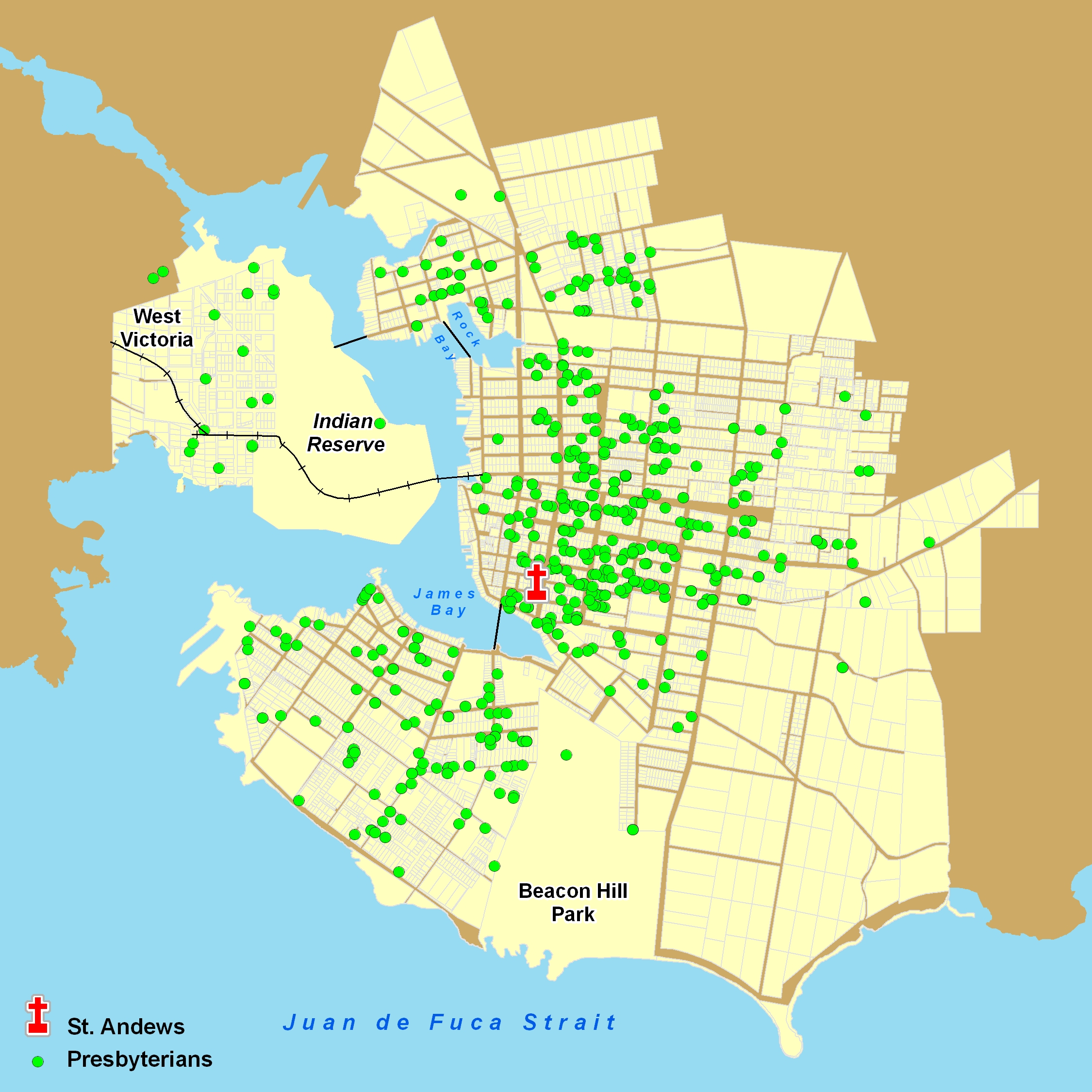A Quantitative Snapshot
Data was collected describing St. Andrew's members listed on Communion Rolls in 1881 and 1899 in order to discover trends in St. Andrew's congregation and to see whether these trends changed during the Victorian era. Census data from online viHistory site that lists census rolls of Vancouver Island was also collected for the years 1881 and 1901. Data from these years was chosen so that comparisons could be made between church members and the city of Victoria during the same time period.
Nationality in St. Andrew's
In 1881 a decided pattern of nationality appeared. Over half of St. Andrew's members had been born in Scotland and most of the other members had Scottish parents. In the city of Victoria, by comparison, only 26% of the roughly 300 Presbyterians had been born in Scotland. The remaining Presbyterians were American or Canadian-born. Thus, St. Andrew's was referred to as "the Scotch Church" by many.
By the end of the Victorian era Canadian-born citizens were the largest group in the church. And immigrants from Scotland at this time identified less frequently as being a Presbyterian . In 1881 83% of those born in Scotland identified as Presbyterian compared to only 75% by 1901. Another change revealed by the Communion Rolls is that by 1889 the church had begun to include other groups of people such as those born in China. Perhaps because of this shift towards a Canadian congregation, St. Andrew's joined the Presbyterian Church of Canada in 1887.
Gender: Church and Community
The most striking difference between those listed on the Church Rolls and those listed as residents of Victoria is one of gender. During this time period men made up the majority of Victoria's population but the Church Rolls list women as the majority of attendees. For example, in 1881 58% of the forty-eight members were women. In Victoria at this time, males made up 59% of the population and of those men, 56% identified as Presbyterian. So why were women outnumbering men at church? Perhaps men's attendance was infrequent because work took them out of town or perhaps their religious feelings were lukewarm? Another explanation is that Presbyterians who came to Victoria were usually accompanied by their families. This is in stark contrast to immigrants who arrived from China, ninety percent of whom were men. By 1901 this weighting of women to men in the church had diminished by only four percent with women still in majority. We know from authors Hoge et al that those listed on the Rolls would have been active members of the church, likely involved in volunteer work to assist the church's projects such as fund raising. Women may have discovered that St. Andrew's could provide a respectable public setting in which to connect with other women and expand their responsibilities in a world dominated by men.
Age within the City, Presbyterians in Victoria and St. Andrew's
Those listed on the church rolls show several distinctions from both Presbyterians in Victoria and Victorians as a whole. In 1881 the largest group of residents in Victoria was the group under ten years of age. Every ten year grouping afterwards shows decreasing numbers, a population pyramid true to its name. Presbyterians in Victoria shared this division with an even larger cohort of children under ten. This could be explained by the larger numbers of women in the Presbyterian community. However, by 1901, Victorians had developed different population pyramids from Presbyterians. Victoria's population had matured while Presbyterians, enjoying the more balanced gender ratio, continued to enjoy a baby boom. Against this background is the interesting dynamic of the age of those on the church rolls. In 1881 those within the age bracket of forty to sixty years of age made up the bulk of those listed. This could be a result of a more stable existence for those that were more firmly established within the city and its turbulent economy; it is important to note that children were not listed on Communion Rolls. By 1901 the situation had changed considerably and the largest group by a considerable margin was those thirty to thirty-nine years of age. Perhaps this shift is related a more stable economy or the fact that more Presbyterians were Canadians by birth. A more stable economy meant younger people could afford to live in Victoria and thus attend church more regularly. This website shows that St. Andrews served as a social and spiritual outlet for a rapidly growing number of Presbyterians.
Work and Employment
Employment patterns changed for Presbyterians during the Victorian era. In 1901, 11% of citizens in Victoria worked in professional or administrator positions. However, a higher percentage than average, 17%, were Presbyterian. Presbyterians were an even larger group in the transportation and trades/manufacturing sectors where they made up about 31% of the workforce. These sectors employed 21% of Victoria's men so here as well, Presbyterians were successful at gaining employment. A third area of work, general labor and hospitality employed 25% of Victorians. In this area Presbyterians were less well represented making up only 10% of this group. From these patterns it would appear that Presbyterians in general would have lived at moderate to high socio-economic levels.
St. Andrew's and Victoria
As Victoria grew, expanded and changed so too did St. Andrew's. The Church gradually became less Scottish and more Canadian as members of the church enjoyed a baby boom during the Victorian era. The Church's missionary work also helped diversify its members as Chinese people were welcomed into the congregation. Throughout the period women formed the majority of regular church attendees. And in general members were middle to upper class Victorians who would lead St. Andrew's into the new century.
Sources:
Hoge, Zech, McNamara, Donahue, The Value of Volunteers as Resources for Congregations, Journal for the Scientific Study of Religion, Vol. 37, No. 3 (Sept., 1998) pp. 470-480.
1881 & 1901 Canadian Census Records on viHistory
Church Rolls, 1881, 1899
Victoria and St. Andrew's

